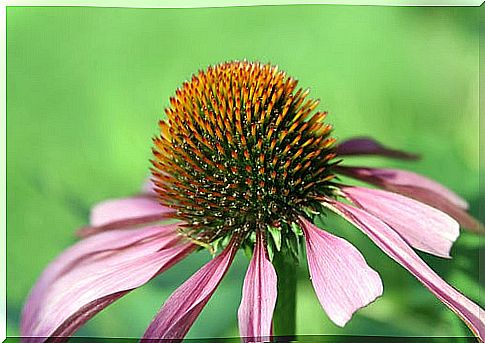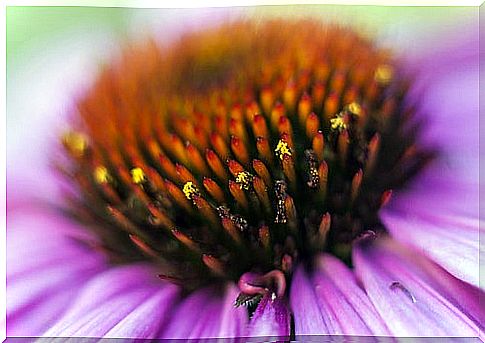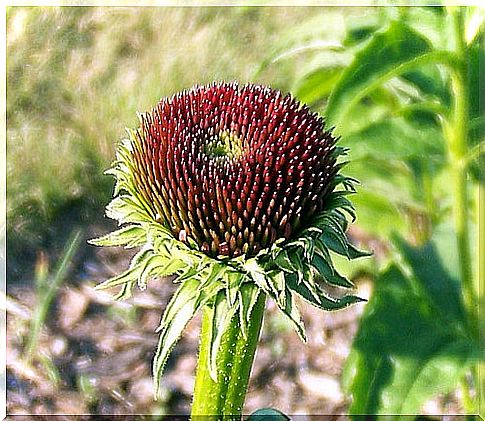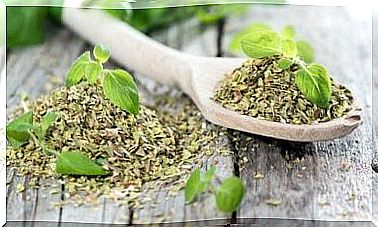Echinacea: A Plant With Health Benefits
Echinacea would be a useful herb to combat conditions. In this article, you will learn more about the characteristics, properties and usefulness of this incredible plant.

Natural medicine maintains that echinacea would be a useful herb to combat the symptoms of different ailments, such as respiratory and urinary infections, herpes, chronic fatigue, migraines and dizziness. In this article, you will learn more about the characteristics, properties and usefulness of this incredible plant.
Echinacea characteristics

The Echinacea or coneflower is a plant native to North America and it was used in ancient times by the American tribes. Its introduction into traditional medicine dates from the early 20th century.
Of its 23 subspecies, only 10 are suitable for human consumption. Of the latter, the 3 most widespread varieties are purple, the one considered most effective, angustifolia and pallida.
Ayurvedic medicine specialists maintain that it is rich in vitamins B and C, riboflavin, beta-carotene and minerals such as iron, calcium, magnesium and sodium.
Many natural products that we find in herbal stores today contain echinacea. Everything is usable in this plant: the root, the flowers, the seeds, the leaves and the stem.
It has been used since time immemorial as a disinfectant and bactericide. Our ancestors already used it to heal wounds caused by arrows or to treat snake bites. More recently, it has been used to relieve symptoms of sexually transmitted diseases, tonsillitis, mouth sores, and eye problems.
A 2007 study indicates that echinacea would be a natural antibiotic, even more effective than conventional antibiotics in relieving infections.
Its antimicrobial properties would allow it to fight bacteria, viruses and fungi. It would also stimulate the production of white blood cells, which would contribute to the strengthening of our immune system. It can be taken dried, tinctured or in the form of a dietary supplement (capsules and tablets).
Its benefits

Digestion facilitator
Echinacea would stimulate not only the appetite, but the secretion of saliva. Its benefits would be remarkable for those who suffer from dry mouth. We know that digestion begins in the mouth, with the action of tyaline on carbohydrates. Hence, it can be inferred that echinacea would help digestion.
Effect on tendon and muscle inflammation
The anti-inflammatory properties of echinacea would help improve the symptoms of tendonitis and bursitis. It would also be effective in injuries caused by the practice of a sport.
Usefulness for the skin
Applied to the skin, the fresh juice of this plant is used to treat wounds of various kinds. We talk about cuts, ulcers and burns. But, also, from hemorrhoids from insect bites, as well as from boils, abscesses, acne, pimples, blackheads and eczema.
With echinacea, you can also treat mouth sores and gingivitis. And, as said before, sore throat and pharyngitis.

Other apps
- It would decrease the fever.
- It would facilitate the expectoration process.
- It would ease the migraine.
- Its use would be recommended in patients with attention deficit hyperactivity disorder (ADHD).
Contraindications?

Although few, it does. This is stated by the European Committee for Medicinal Herbs (HMPC). It has been shown to cause allergic reactions in children under the age of twelve.
Cases have been recorded that suffered from hives, rashes and inflammations on the skin. The most severe responses were the generalized immune reaction called anaphylaxis and an aggravation of respiratory problems such as asthma.
The use of echinacea is discouraged in patients with liver diseases, as well as during pregnancy and lactation. It is also necessary to know that this herb could cause interactions in the presence of other substances or medications.
Also, it is important to know that the consumption of echinacea should not last beyond two months. If after that time, it is necessary to continue consuming it, you could interrupt its consumption for one or two weeks and continue later.
Regardless of its properties and multiple applications, echinacea should always be consumed under the supervision of an expert.
How to consume it
Only an expert could indicate the dose and the periodicity with which we should consume echinacea.

Its presentation varies depending on the way it is prepared. Thus, the appearance of echinacea could range from one dry extract to another, fluid, through capsules, infusions and tinctures. If used topically, it can be purchased in the form of dressings, creams, and lotions.
To prepare its infusion, the dried leaves and root extract are used. You could consume it up to 5 cups the first day. Then, it is necessary to progressively reduce the amount until taking only one daily.
Images courtesy of Nomadic Lass, Alexandre Dulaunoy, Manuel MV, Aaron Carlson, Nuuuuuul, Christopher Craig.









